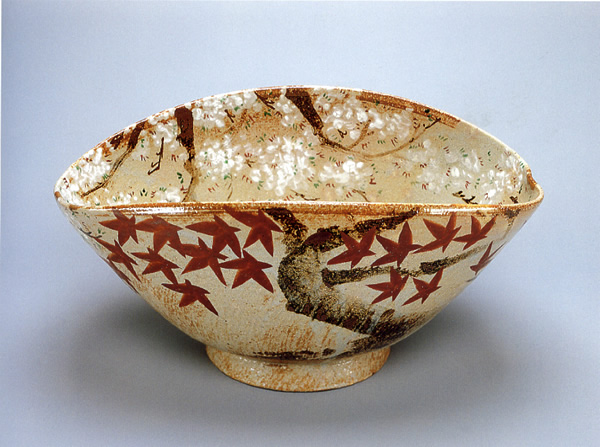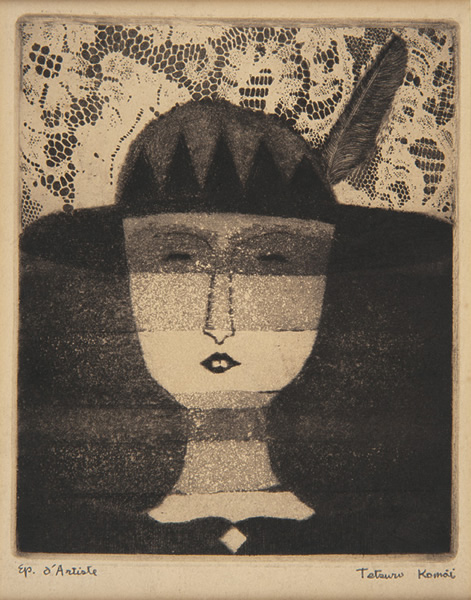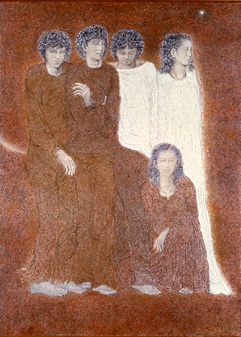Sammlungen mit besonderem Flair
Herr Iwaji Shioda, der ein enger Freund von Rosanjin Kitaoji war, schenkte dem Setagaya Kunstmuseum 157 Werke Kitaojis, unter anderem Malereien und Keramiken (die Shioda-Sammlung). In jüngerer Zeit erhielt das Museum etwa 500 Druckgrafiken von Tetsuro Komai, die der Ehrenpräsident des Unternehmens Shiseido, Herr Yoshiharu Fukuhara, über lange Jahre gesammelt hatte. Neben diesen Schenkungen gehören eine ganze Reihe weiterer kleiner und großer Werke, die alle ihre besonderen Eigenheiten haben, zur Sammlung unseres Museums.
Kitaoji Rosanjin (1883-1959)
‘Large Bowl with Cherry-Blossoms and Maple Trees in Underglaze Iron and Overglaze Enamels’
1940
Ceramic
Ceramicist and calligrapher born in Kamigamo, Kyoto. Began his artistic career as a calligrapher. Traveling around the country as the guest of wealthy merchants and other elites, he began to take an interest in antiques and cuisine. Opened an arts and antiques gallery in 1919. Founded the “Bishoku Club,” a gourmet club, on the second floor of the gallery in 1921. Launched “Hoshigaoka Saryo,” Japan’s only private membership-based restaurant at the time, in 1925. He was expelled from the restaurant in 1936, and later began devoting himself exclusively to pottery making. He displayed diverse talents throughout his life, even publishing a quarterly magazine titled “Doppo.”
Komai Tetsuro (1920-1976)
‘Portrait of Mrs.R’
1950
©Yoshiko Komai 2017/JAA1700170
Aquatint, etching, and partial monotype on paper Print artist born in the Chuo district of Tokyo. Moved to Setagaya’s Shinmachi area (now Komazawa) in 1947. Began studying etching under Takeo Nishida at the age of fifteen. Enrolled in the oil painting program of the Tokyo School of Fine Arts in 1938. In 1950, he submitted his first work to the Shunyo Art Association, which won the association’s prize. Praise from the painter Shikanosuke Oka catapulted him into the limelight. In 1954, he joined the “Jikken Kobo” avant-garde group. His works depict a monochromatic world of dreams and fantasy. In addition to etchings, they also include many woodcuts, book illustrations, and even colorful monotypes.




